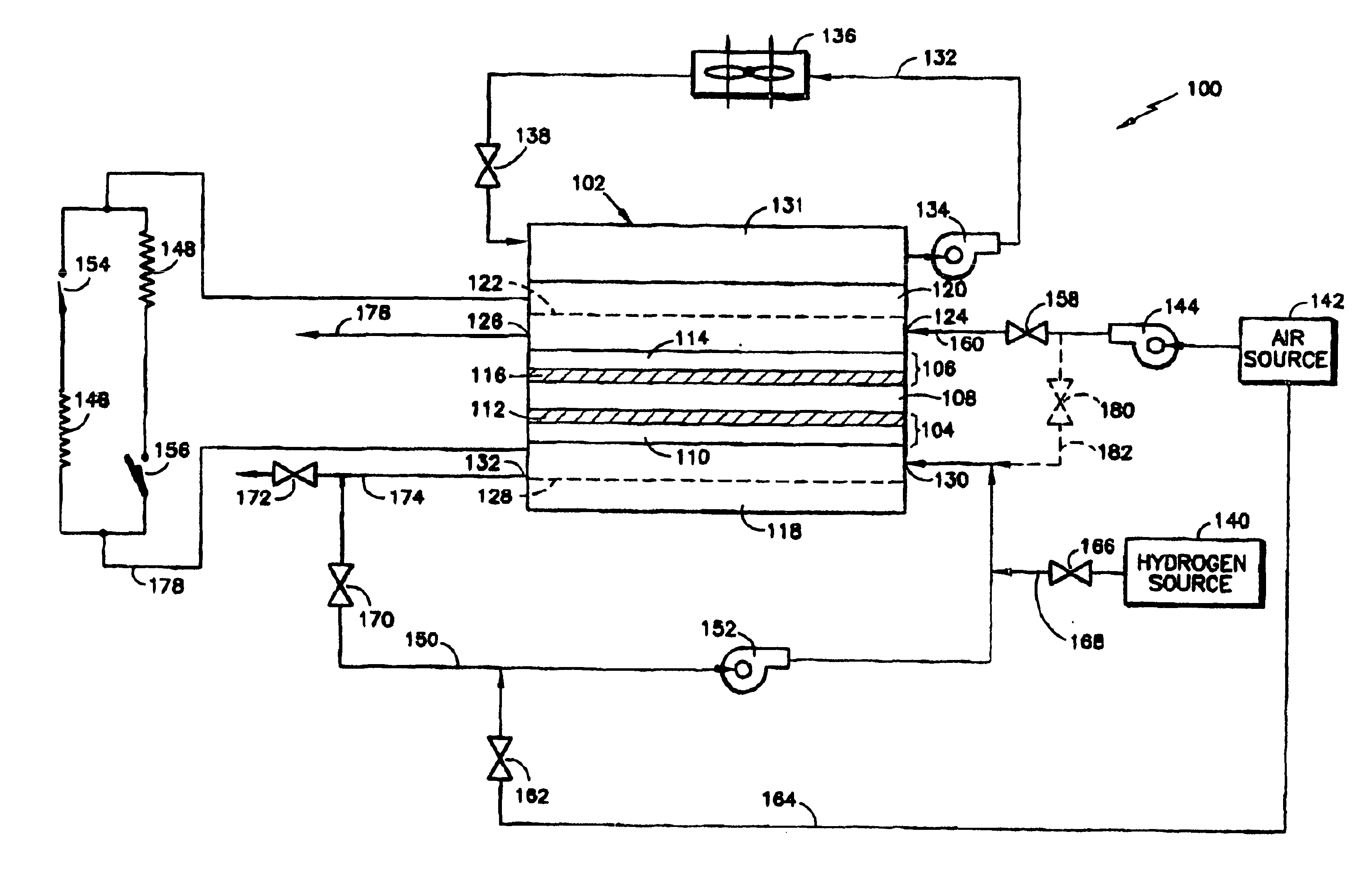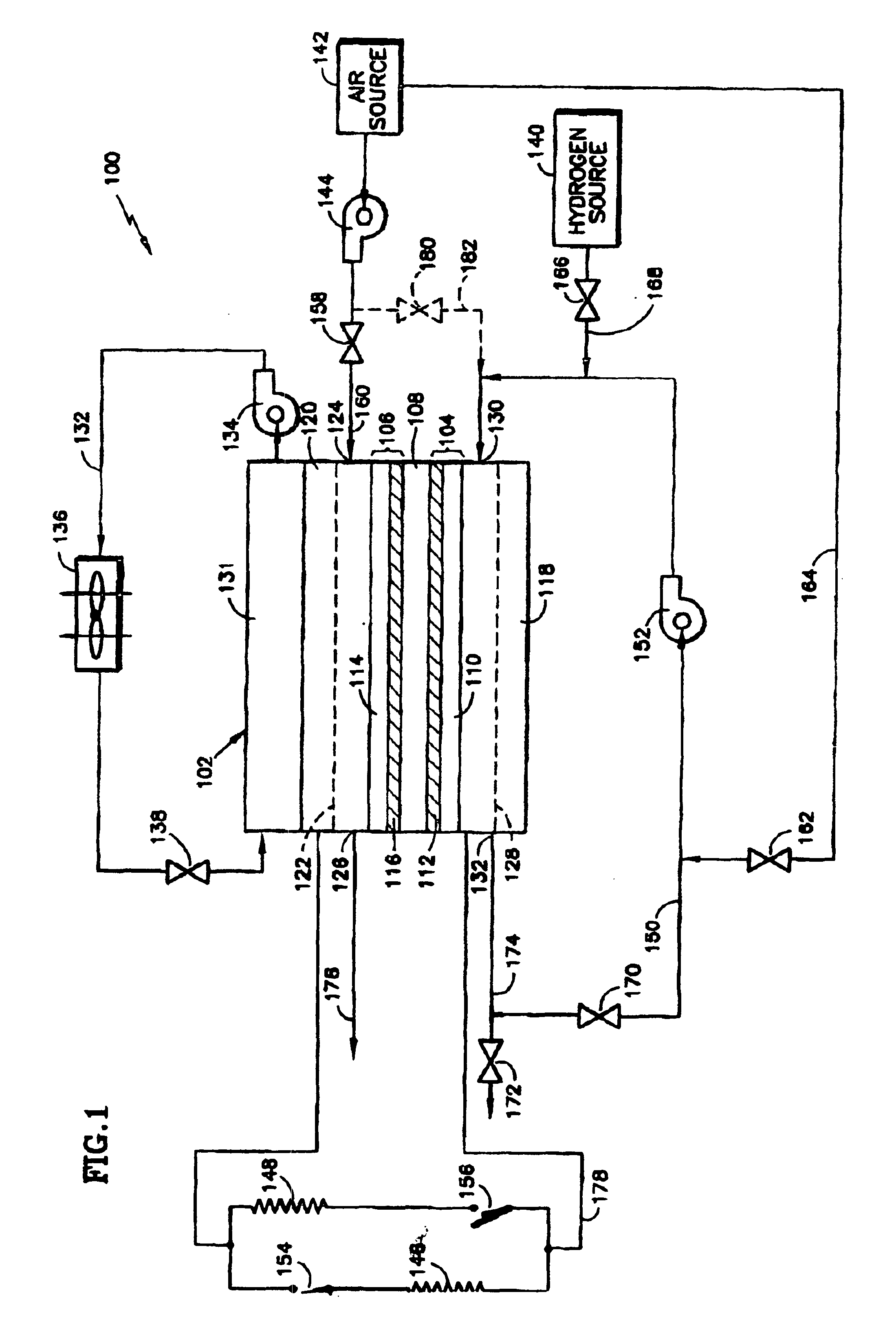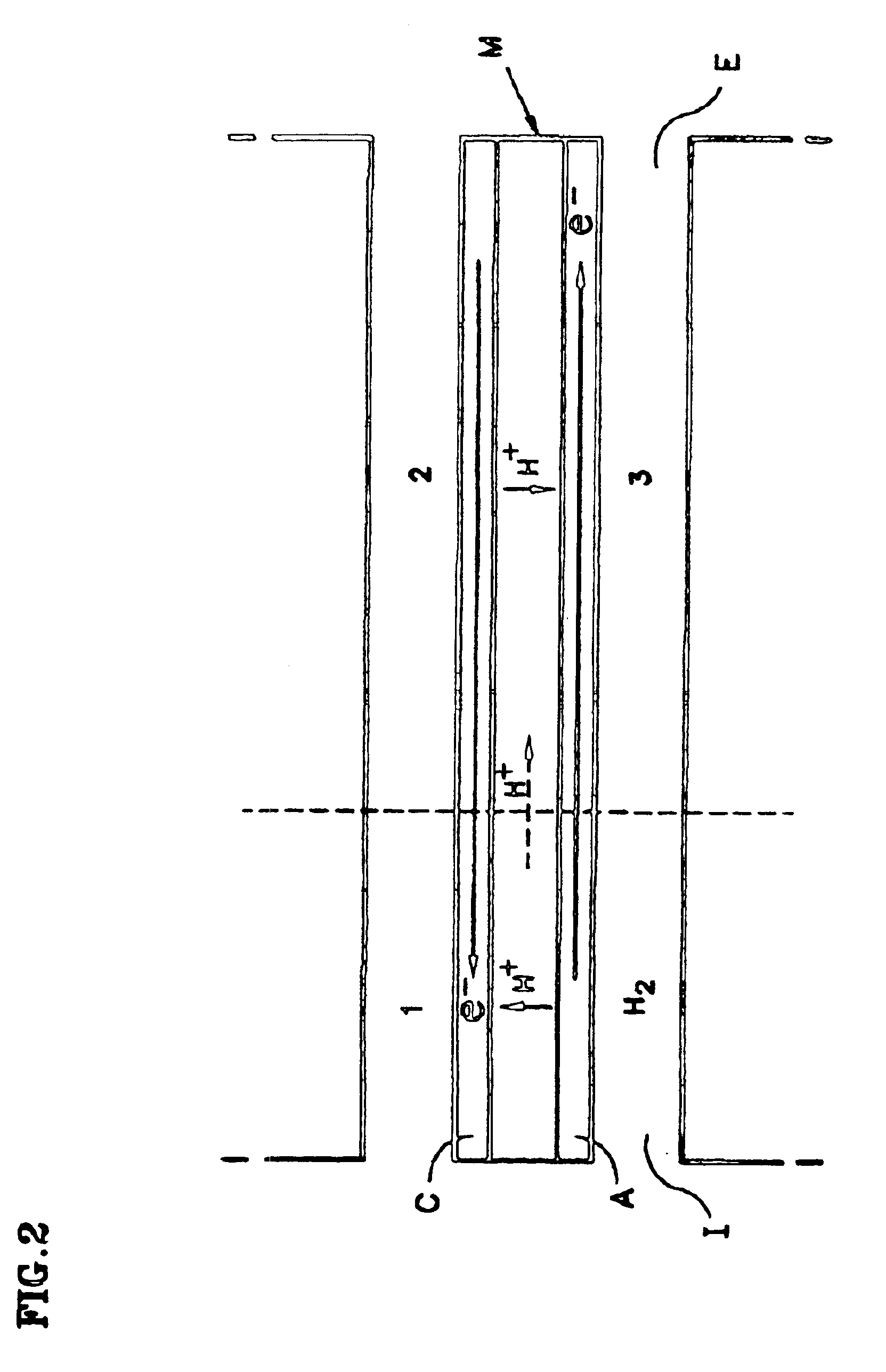Procedure for starting up a fuel cell system using a fuel purge
- Summary
- Abstract
- Description
- Claims
- Application Information
AI Technical Summary
Benefits of technology
Problems solved by technology
Method used
Image
Examples
Embodiment Construction
[0022]In FIG. 1, a fuel cell system 100 is shown. The system includes a fuel cell 102 comprising an anode 104, a cathode 106, and an electrolyte layer 108 disposed between the anode and cathode. The anode includes an anode substrate 110 having an anode catalyst layer 112 disposed thereon on the side of the substrate facing the electrolyte layer 108. The cathode includes a cathode substrate 114, having a cathode catalyst layer 116 disposed thereon on the side of the substrate facing the electrolyte layer 108. The cell also includes an anode flow field plate 118 adjacent the anode substrate 110, and a cathode flow field plate 120 adjacent the cathode substrate 114.
[0023]The cathode flow field plate 120 has a plurality of channels 122 extending thereacross adjacent the cathode substrate forming a cathode flow field for carrying an oxidant, preferably air, across the cathode from an inlet 124 to an outlet 126. The anode flow field plate 118 has a plurality of channels 128 extending ther...
PUM
 Login to View More
Login to View More Abstract
Description
Claims
Application Information
 Login to View More
Login to View More - R&D
- Intellectual Property
- Life Sciences
- Materials
- Tech Scout
- Unparalleled Data Quality
- Higher Quality Content
- 60% Fewer Hallucinations
Browse by: Latest US Patents, China's latest patents, Technical Efficacy Thesaurus, Application Domain, Technology Topic, Popular Technical Reports.
© 2025 PatSnap. All rights reserved.Legal|Privacy policy|Modern Slavery Act Transparency Statement|Sitemap|About US| Contact US: help@patsnap.com



